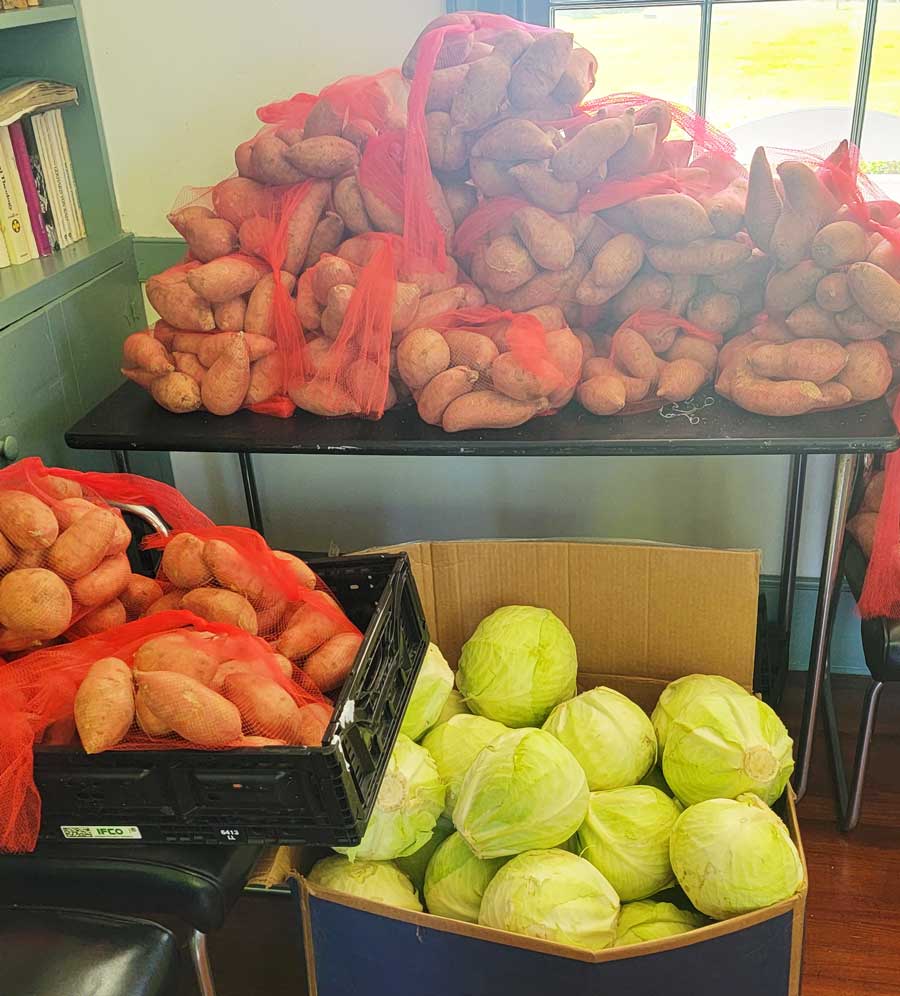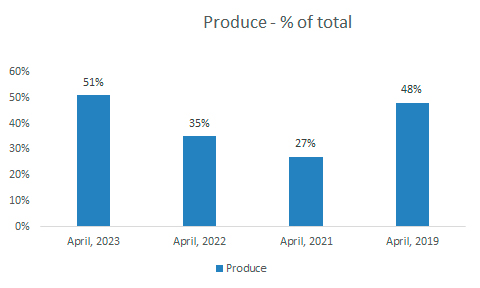Click here to view in a new window.
2023 Sun April 30
Maximilian Kolbe – a caring shepherd among his people
From a sermon by Rev. William D. Oldland, "Jesus is the Shepherd and the Gate" about Maximiliam Kolbe

"His life exemplifies the role of a caring shepherd for his flock. His life is also a gate or perhaps a gateway through which we can see the effect of the incredible love of God.
"The priest’s name was Maximilian Kolbe. He was born in 1894 in Poland. His parents were poor. His father was a weaver. At an early age he had a vision. He had prayed to Mary and asked what was to become of him. In response Mary came to him in this vision holding two crowns. One was red and the other was white. The white one symbolized perseverance in purity and the red one meant martyrdom. She asked which one he would choose. He said he would accept them both. This decision shaped his future actions and would one day come true.
" In 1910, he entered the Franciscan order and he was ordained a priest in 1919 in Rome. On his return to Poland he was a teacher of church history and he built a friary outside of Warsaw. The friary grew until it housed 762 Franciscans. He went to Japan and India and started friaries there as well. In 1936, he returned to supervise the friary in Warsaw. When Germany invaded he sent the friars home to protect them. He was a good shepherd to his flock. He was imprisoned for a while. But when he was released he went back to the friary where he took in three thousand refugees. 2,000 of these refugees were Jewish. Those friars who worked with him shared all they had with the refugees. They shared their clothing, the little food that they had, and anything else that was useful.
" As you can imagine the Germans became suspicious and in 1941 they closed the friary arresting Maximilian and four other brothers. They were all transported to Auschwitz. At the camp Maximilian endured many hardships. No one had enough food. Clothing was inadequate for the cold. Shelter was not much help from the cold either. Maximilian was known to move among the prisoners with gentleness. At night he did not rest. He moved from bunk to bunk identifying himself as a priest and asking if they needed anything from him. He listened to confessions and heard their pleas for consolation. He continued to be a shepherd to his flock.
" Father Kolbe also endured personal pain. An SS officer saw him one day. He chose the heaviest boards he could find. He loaded them on Father Kolbe’s back and made him run with the load. When he fell the officer kicked him in the stomach and face. He ordered the soldiers to give him fifty lashes. Father Kolbe lost consciousness and the soldiers left him in the mud for dead. Some prisoners snuck him into the infirmary.
" Here is where we see the gateway begin to open. Even though Father Kolbe was beaten horribly, he endured all of the hardship. He pleaded with the other prisoners to forgive the persecutors, to pray for them, and to overcome their evil with good. Whenever he was beaten, he did not cry out. He prayed for them. He was always the last to seek help for his injuries. Everyone else had to go first. Do we begin to see the gateway? Can we see where Jesus has called this man? Do we see how Jesus is with this man? Even in the pain, even in the heart of this incredible darkness, Jesus’ light shines out as a beacon of love. This man lives the faith he believes. Yet, this story is not over.
A Boost for the Village Harvest, April 2023





Clients at the Village Harvest increased from 81 in March to 104 in April. Ongoing, the church is now advertising with local social service and Caroline County Schools to increase visits. 104 represents the largest number since Jan, 2022 where there were 115. It was additionally above last year’s April figure of 70.
Food in pounds were 1,365 representing the largest amount of food available since last Dec.
The food is divided into produce, grocery items and meat. The graph compared April 2023, 2022 and 2021 and then 2019. (There was no distribution in 2020 due to the pandemic.) Produce recovered in April, 2023 up to 51% of the total after slipping to 35% and 27% in 2022 and 2021, respectively. It now exceeds in percentage 2019, the last normal year prior to the pandemic.

Despite the improvement year to date after 4 months, we are 12% below 2022 in clients and 20% under in available food.
Easter 4, Year A, April 30
I.Theme – Jesus as the Good Shepherd and the many ways this is fulfilled.

"Jesus the Good Shepherd" Jacques Le Breton and Jean Gaudin (1933)
The lectionary readings are here or individually:
Old Testament – Acts 2:42-47
Psalm – Psalm 23, Page 612
Epistle –1 Peter 2:19-25
Gospel – John 10:1-10
The first weeks from Easter were different lenses on the resurrection and appearances of the Risen Lord, first with Thomas and then the Road to Emmaus. After this Sunday attention will turn to the teachings of the departing Jesus and the role of the Holy Spirit in preparation for Pentecost. But this week its the shepherd/ sheep image as a way of talking about the enduring and deep connection of Jesus and those who follow him
Psalm 23 provides the role of God as good shepherd in terms of defense (protection amd care and the idea we having nothing to fear) but also in direction ( guidance, reviving our lives).
The final verse of the Epistle makes the connection to Good Shepherd Sunday. "For you were going astray like sheep, but now you have returned to the shepherd and guardian of your souls." Suffering isolates. This passage and Christian faith connect and keep us connected when suffering.
John’s reading speaks of Jesus as both the Shepherd and the gate. The connection is both personal and loving. "He calls his own sheep by name and leads them out." We have to listen to his voice and watch out for strangers. There are those who are false shepherds, who are more interested in themselves than in caring for the sheep.
The final verse, "I came that they may have life and have it abundantly" is a good corrective to what can be an overemphasis on selflessness, self-sacrifice, deprivation and denial as the sign of true faith. Jesus speaks of abundance not in terms of material goods but a fullness in life.
Prayer events coming up

1. May 4 – The National Day of Prayer is an annual observance held on the first Thursday of May. On this day, people of all faiths pray for the nation. Since the first call to prayer in 1775, when the Continental Congress asked the colonies to pray for wisdom in forming a nation, the call to prayer has continued through our history, including President Lincoln’s proclamation of a day of “humiliation, fasting, and prayer” in 1863. There will be a national service on 8pm-10pm or here

2. Julian of Norwich, May 8. What does a 14th Century Mystic have to with us ? One of the first women authors, her visions (“showings”) of Christ continue to inspire.
We also know her by her famous quote “All shall be well, and all shall be well, and all manner of things shall be well.” We celebrate her day on May 8.
Julian’s Revelations of Divine Love is based on a series of sixteen visions she received on the 8th of May 1373. In her 30th year she was expected to die from an illness. “Then, on the seventh day, the medical crisis passed, and she had a series of fifteen visions, or “showings,” in which she was led to contemplate the Passion of Christ. These brought her great peace and joy. She became an anchoress, living in a small hut near to the church in Norwich, where she devoted the rest of her life to prayer and contemplation of the meaning of her visions.”
Listen to a podcast on her with a brief article.

3. “The Balanced Diet of Prayer” This is an article by the Rev. Canon Dr. Andrew R. Wright.
“However we pray, it’s important to attend to the range of ways that we are invited to respond to God in prayer. One way to remember a “balanced diet” of prayer is the acronym ACTS, which stands for Adoration, Confession, Thanksgiving, and Supplication.” Check out the article!
